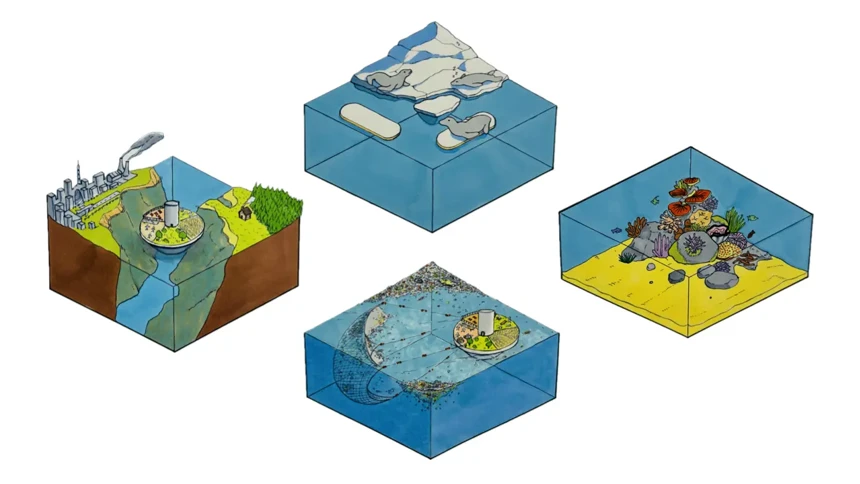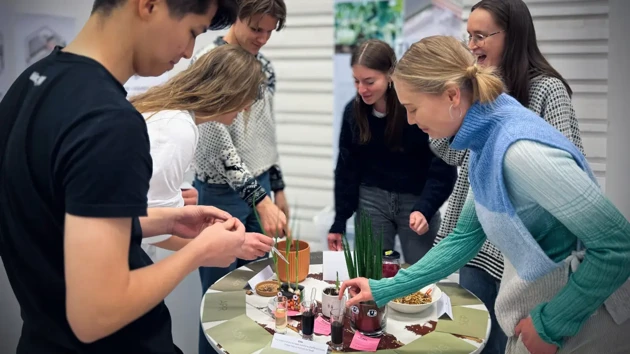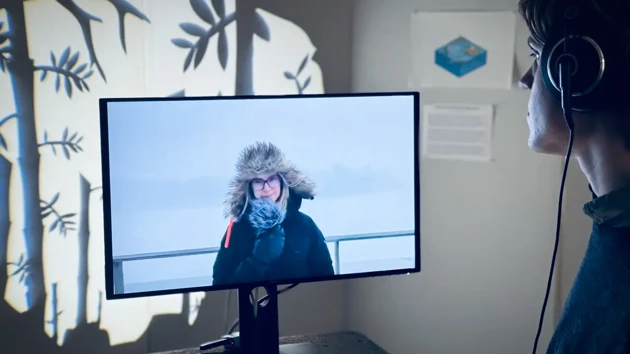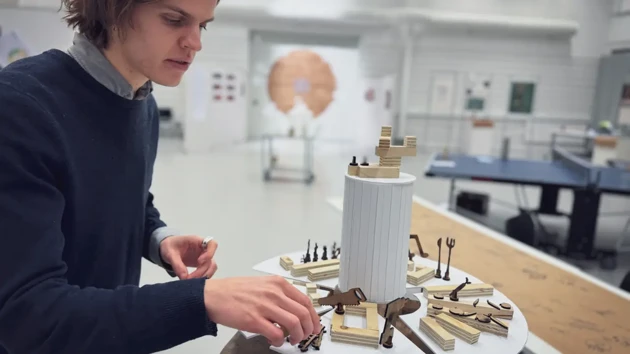From Boats to Bacteria: Envisioning Sustainable Food Futures
Food is a vital and complex issue that affects everyone and everything on the planet. Can design help untangle the unsustainable food systems hurting our ecosystems? With an array of design utensils at hand, students at UID cooked up a series of more just, and more livable, food futures.

Illustrations by Julian Mathieu depicting different scenarios in a speculative design project exploring more-than-human design opportunities.
Image:Julian MathieuOur global web of interconnected food systems is facing a multitude of challenges, such as hunger, water shortage, food waste, loss of food variety, and climate change. The potentially harmful consequences of our food systems are not only environmental, but also social, economic, and political, often provoking inequalities and injustices among different groups of people and other earth beings. For the annual Hot Team-project, students from the BFA Programme in Industrial Design were challenged to use design as a tool for envisioning new ways, and new worlds, in human-food relationships.

BFA students setting up their group's exhibition for the Hot Team course on food futures.
Image: Jens Persson“This year's project is about imagining a future that is different from how we live today, and to design within that future. Normally, in a design project, you think about how to add some more bricks to an existing house. In this course, we’re very much building a new house”, says Zeo Löwenhielm, BFA3 student.
A speculative design journey across the seas
Using their own experiences of preparing and eating food as a jumping off point, students began exploring how they themselves were entangled with the worldwide “food-industrial complex”. Through hands-on prototyping, always engaging with different materials, students set off on a series of parallel speculative design journeys.

BFA student Zeo Löwenhielm demonstrating his group's speculative design scenario during the Hot Team exhibition.
Image: Jens PerssonOne such journey was by boat. Zeo Löwenhielm’s team envisaged a dire future after the projected great famine of 2052. To inspire fellow design students to live as equals within future ecosystems, they devised a design education for the year 2078. The one-year course takes place on a boat, drifting from continent to continent, guided only by the major ocean currents.
On the boat, students learn to live together in a closed-loop system by applying sustainable practices of food production, energy extraction and waste management. The voyaging students practice “terrestrial caretaking” on the shores, reefs, or ice masses that the boat encounters. The focus of the education lies on designing for more-than-human actors within different bionetworks around the globe.
A floating laboratory for exploring alternative food systems
In this speculative scenario, the boat also arrives at a handful of established stations, called ‘Guiding Stars’, where students are greeted by experienced terrestrial caretakers, educated and immersed in the local ecosystems. Each year, as the course comes to an end, travelling students are challenged to create a new ‘Guiding Star’ station somewhere in the world where they believe design can be a useful instrument for ecological restoration, in collaboration with local communities.
The boat is a radical experiment in design education
ZEO löwenhielm
One such imagined site is located in northern Japan, where students are seeking to restore a forest’s ecological balance. A species of bamboo is threatening the native flora and fauna, and residents fear that the invasive plant is endangering biodiversity. Thus, the local governance has decided to cut down the bamboo. However, the fungi and bacteria that normally decompose bamboo do not survive in this colder climate, so students need to find ways to use it, or transport it to another region.

Zeo Löwenhielm setting up the model for the project on sustainable bamboo forestry in northern Japan.
Image: Jens PerssonIn the proposed scenario, students are left with two options: they can stay in the forest and explore how the bamboo can co-exist with the local ecosystem, or they can transport the bamboo to a nearby bioregion and study how it can be useful there. The students have to weigh the pros and cons and consider the impact of their design decisions on the environment and the society. The scenario illustrates the complexity and diversity of design challenges that the students may face, where they constantly have to adapt and innovate to create more sustainable and harmonious food futures.
“The boat is a radical experiment in design education. Unlike the conventional way of learning design, where students are confined to a fixed location and potentially disconnected from the realities of the places and people they design for, the boat offers a different perspective. Everything that the students consume and produce on the boat is locally sourced and locally distributed, minimizing waste and maximizing impact", says Zeo Löwenhielm.
"The students do not design for profit, but for the benefit of the more-than-human communities they encounter along the way. The boat is a living laboratory, where design is not an end in itself, but a means to explore and transform the world”